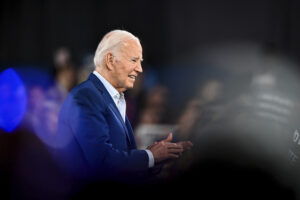Opinion: Any of these 3 hot spots could derail the global economy in 2024

A year ago, we highlighted several trends that would define the world economy in the coming years. Briefly, they were trade and economic realignment, stagflation, and volatility and a likely slowdown in the tech sector. These remain relevant in 2024. But the year will also bring more clarity, especially as the direction and dynamics of trade and investment flows settle into a new normal. Below, we discuss three issues that will receive particular attention from us in the year to come.
1. China’s de-risking strategy: In December, Moody’s issued a downgrade warning on China’s credit rating, citing the likely costs of bailing out local governments and state-owned firms and a real estate crisis. The ratings agency did the same to Hong Kong and Macau, as well as several banks. Moody’s said China’s 2020 national security law and electoral reforms had degraded Hong Kong’s autonomy, which raises questions about the rule of law and investor protections.
At the same time, Beijing is stepping up efforts to attract more investment from abroad. In November, amid other warm gestures, China’s President Xi Jinping finally met with U.S. President Joe Biden for their first sit-down in a year. China also held its twice-in-a-decade high-level review of the financial sector, the Central Financial Work Conference, which it said afterward supported the Chinese Communist Party’s core vision of the banking industry. The role of finance, according to China’s leaders, is to serve the actual economy, while the government is responsible for maintaining stability, controlling risks, and supporting local innovation and development. It was a dramatic change from the 2017 conference, when the primary focus was on managing imbalances created by shadow banking, local government debt and the real estate bubble.
“If China fails to liberalize, or even further centralize control, a likely beneficiary will be India. ”
The conference report also noted Beijing’s long-term commitment to gradually opening the Chinese economy to foreign investment and private competition. The challenge is figuring out how to get from here to there. The pandemic, Western supply-chain “de-risking,” higher interest rates in the U.S. and Europe and falling Chinese asset prices have created near-term liquidity issues for China. Moreover, China’s leaders appear to be moving toward more, not less, control over the national economy.
It’s still unclear what’s next for China, but whatever it is will reverberate around the world. If China fails to liberalize, or even further centralize control, a likely beneficiary will be India. Though not as attractive an investment destination as China, India is the single country that comes closest to replicating China’s size advantage for foreign firms looking to shift or set up production somewhere else. Besides its favorable demographics, India also benefits from its foreign policy of nonalignment. In time, it could become a global economic power.
“The U.S. and Europe will have to continue rebuilding their defense industrial bases. Russia, having switched to a war economy much earlier, has a major advantage. ”
2. Supporting Ukraine: Wars almost always end in negotiations, but in the case of the Russia-Ukraine war, opportunities for leaders to sit down in 2024 will be few and far between. The problem is the election calendar. Russia will hold presidential elections in March, followed by U.S. elections in November. In between those, Europeans in June will vote for the next European Parliament, which will appoint a new European Commission, the bloc’s executive. Even Ukraine may hold presidential elections; they are scheduled for the end of March, though the government’s position at the moment is that they should wait for the war to end.
Changes to Russia’s top leadership are extremely improbable, and the next government will continue to reorient the Russian economy away from the West and dampen the impact of Western sanctions. In the U.S., social polarization makes for a tense political environment, and the economy remains the top focus. Barring a miraculous breakthrough by either side on the Ukrainian battlefield, the Biden administration would be taking a serious political risk if it stakes its reputation on ending the war.
Faced with the prospect of an even longer war, the U.S. and Europe will have to continue rebuilding their defense industrial bases. Russia, having switched to a war economy much earlier, has a major advantage. Western governments only seriously started increasing military spending in 2023, but prices and interest rates went up through the course of the year. Additionally, with elections on the horizon, politicians are loath to hike taxes, cut social spending, or backtrack on plans to subsidize the green transition, industry and digitization. Western governments’ budget constraints will become increasingly obvious toward the end of 2024, especially as supporting Ukraine demands more of their resources.
Against this backdrop, Western governments will have to put up the cash to sustain the Ukrainian state and, where possible, help the country rebuild. Private investors are not keen on investing in war zones, and Kyiv needs as many grants and low-interest loans as it can get. However, as can already be seen, election season will complicate and probably delay spending decisions, especially in the United States. What aid the West can muster will likely have to prioritize Ukraine’s defense needs; the rebuild will have to wait.
Ukraine’s economy depends almost entirely on Western help. Even to sell its goods abroad, Kyiv relies on the West to facilitate shipping or, in the case of the Black Sea, provide security support. At the same time, ordinary Ukrainians’ dissatisfaction with the government and its conduct of the war has been gradually rising. Whenever Ukraine holds elections again, it can be sure that Russia will try everything to influence the outcome. After all, regime change has been the Kremlin’s goal from the beginning.
3. Supply-chain disruption: The third issue is the potential for security degradation to further disrupt global supply chains. The last months of 2023 were among the most brutal in recent Israeli and Palestinian history. The Hamas attack on Oct. 7 traumatized Israel and undermined its sense of security. Israel’s military response in Gaza has been brutal. The concern for businesses is whether the situation will disrupt global oil supplies — which it could do if the conflict draws in Iran or other producers.
Also read: U.S., British launch massive retaliatory strike against Iranian-backed Houthis in Yemen
Such was the case in 2022 after Russia invaded Ukraine. That year, a spike in inflation led many countries to quickly raise interest rates, limiting their capacity to use expansionary fiscal policy to fight the weakening economic activity. Though inflation has since largely fallen, interest rates remain high and growth remains weak. This has created a certain resilience in demand; higher energy prices may well lead to higher food prices, but more developed economies will adapt.
“ Energy demand will likely grow in 2024, potentially adding upward pressure on the price of energy.”
Meanwhile, given China’s limitations toward growth, and considering it needs to maintain good relations with the U.S. (and vice versa), energy demand will likely grow in 2024, potentially adding upward pressure on the price of energy. China and the U.S. seem to have reached an understanding, as evidenced by Xi Jinping’s visit to the U.S. last fall, but that doesn’t mean Washington will end the decoupling or de-risking policies it has promoted to ease its dependency on global supply chains.
The rise in global conflicts will accelerate this push toward de-globalization. Higher insurance costs for international shipping since 2022, especially in areas affected by war, have forced countries and companies alike to prefer secure trade over free trade. Reshoring, near-shoring and “friend-shoring” all suggest a trade-off between efficiency and robustness, with just-in-time global supply chains giving way to just-in-case arrangements. This will affect labor too; demographic problems in Europe, Japan and China will reduce the supply of workers at a time when immigration restrictions are driving up the cost of labor.
Antonia Colibasanu is senior geopolitical analyst at Geopolitical Futures and senior fellow for Eurasia program at the Foreign Policy Research Institute. This article is published with the permission of Geopolitical Futures®, where it originally appeared.
Read: ‘Dr. Doom’ Nouriel Roubini: ‘Worst-case scenarios appear to be the least likely.’ For now.
More: El-Erian: Investors are banking on the Fed to boost markets in 2024. That’s a shaky bet.









